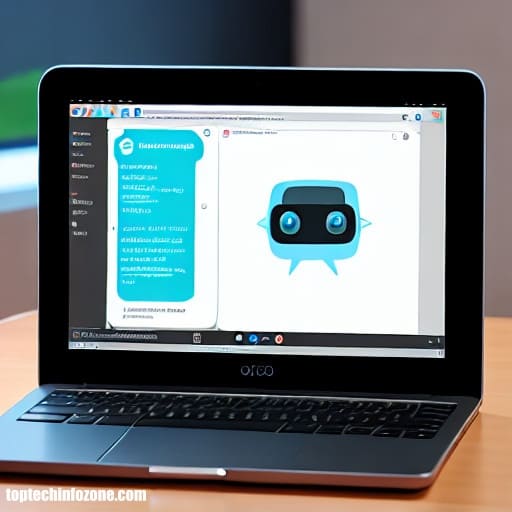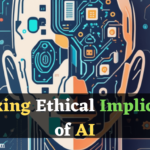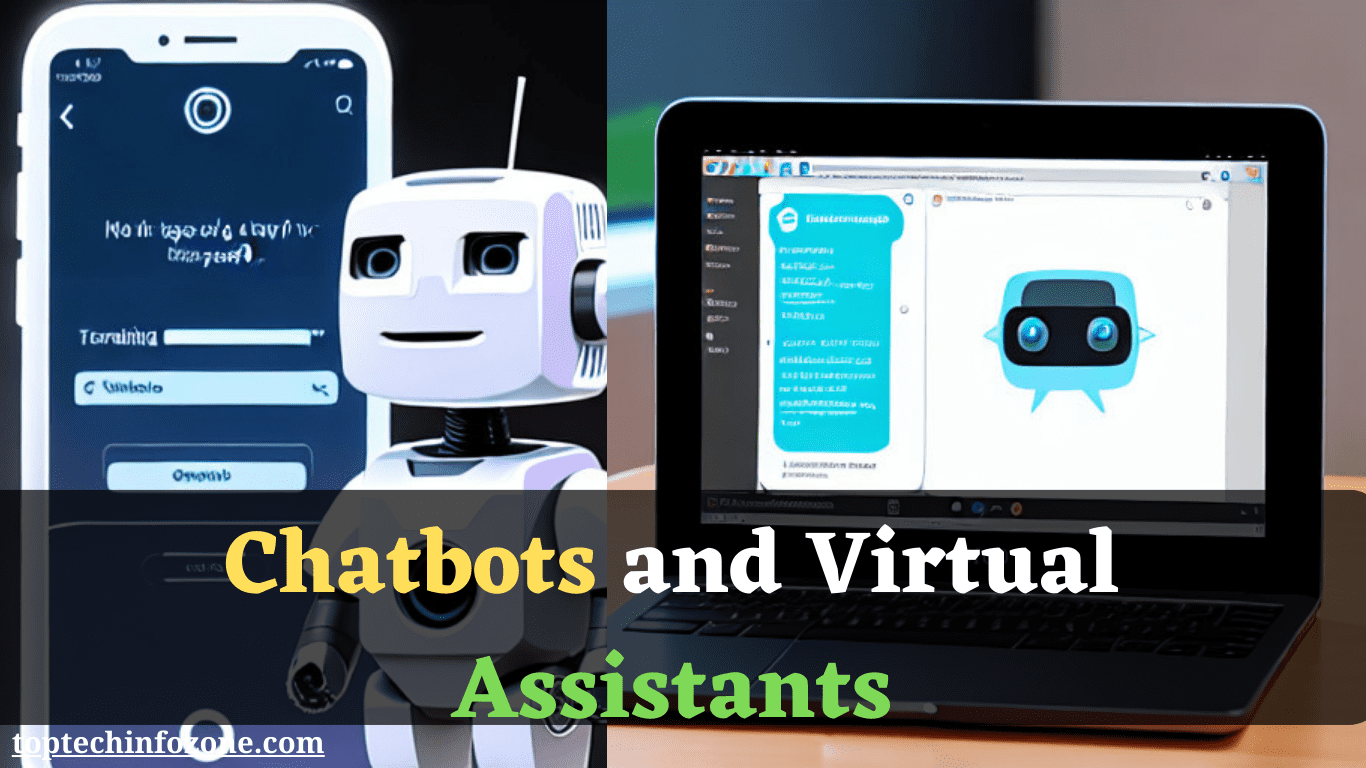Discover how Chatbots and Virtual Assistants are revolutionizing customer experiences. Learn about their benefits, applications, and how they can optimize your business operations.
Introduction:
In today’s fast-paced digital world, businesses are constantly seeking innovative ways to enhance customer experiences. One such revolutionary solution is the integration of Chatbots and Virtual Assistants. These intelligent tools have the power to transform customer interactions, streamline processes, and ultimately boost business growth. In this article, we’ll explore the various dimensions of Chatbots and Virtual Assistants and how they contribute to enhancing customer experience.
Enhancing Customer Experience with Chatbots and Virtual Assistants
The integration of Chatbots and Virtual Assistants in various industries is significantly improving customer experiences. From retail to healthcare, these AI-driven tools are changing the way customers engage with businesses.
Simplifying Customer Interactions
With Chatbots and Virtual Assistants, businesses can offer real-time assistance to customers, addressing their queries and concerns promptly.
These AI-powered solutions are available 24/7, ensuring customers receive support even outside regular business hours. This accessibility leads to increased customer satisfaction and loyalty.
Personalized Recommendations
Chatbots and Virtual Assistants analyse customer data and behaviour to provide tailored product or service recommendations.
By understanding individual preferences, these tools enhance cross-selling and upselling opportunities, ultimately contributing to higher conversion rates.
Seamless E-commerce Experiences
In the realm of e-commerce, Chatbots enable smooth navigation through product catalogs, assist in making purchases, and even track shipping details.
These features replicate the in-store shopping experience, building trust and satisfaction among online customers.
Efficient Issue Resolution
Virtual Assistants are adept at resolving common customer issues, such as password resets or troubleshooting.
By automating these tasks, businesses can allocate human resources to more complex matters, improving overall efficiency.
Language Support and Global Reach
Chatbots and Virtual Assistants can communicate in multiple languages, breaking down language barriers and expanding a business’s reach to international markets.
This global accessibility enhances inclusivity and opens up new growth opportunities.
Data-Driven Insights
The data collected from customer interactions with Chatbots and Virtual Assistants provide valuable insights into consumer behaviour and preferences.
Businesses can leverage this information to refine their strategies, enhance products or services, and tailor marketing campaigns effectively.

The Versatility of Chatbots and Virtual Assistants
Chatbots and Virtual Assistants are versatile tools that find applications in various industries, bringing convenience and efficiency to both businesses and customers.
Healthcare and Medical Support
In the healthcare sector, Virtual Assistants can schedule appointments, remind patients to take medication, and provide basic medical information.
This technology streamlines administrative tasks, allowing medical professionals to focus more on patient care.
Banking and Financial Services
Chatbots are transforming banking by assisting customers with balance inquiries, fund transfers, and even investment recommendations.
These tools offer quick responses to financial queries, making banking services more accessible and user-friendly.
Travel and Hospitality
Virtual Assistants in the travel industry help customers with booking flights, hotels, and rental cars.
They also provide travel itineraries and recommendations for local attractions, enhancing the overall travel experience.
Retail and E-commerce
Chatbots assist online shoppers by answering product-related questions, guiding them through the purchase process, and suggesting complementary products.
This level of customer support leads to higher conversion rates and reduced cart abandonment.
Education and E-Learning
Virtual Assistants are being integrated into e-learning platforms to provide students with instant answers to queries, offer study resources, and even facilitate quizzes.
This personalized learning experience improves student engagement and knowledge retention.

Implementing Chatbots and Virtual Assistants: Best Practices
To fully leverage the potential of Chatbots and Virtual Assistants, businesses should adhere to certain best practices.
Define Clear Objectives
Before implementation, businesses should outline their goals for using Chatbots and Virtual Assistants.
Whether it’s improving customer support or boosting sales, having clear objectives guides the customization and functionality of these tools.
Design User-Friendly Interfaces
The interface through which customers interact with Chatbots and Virtual Assistants should be intuitive and user-friendly.
Simple navigation and easy access to key features enhance the overall user experience.
Continuous Learning and Improvement
Chatbots and Virtual Assistants should be equipped with machine learning capabilities to continuously improve their responses and recommendations based on user interactions.
Regular updates ensure accurate and relevant assistance.
Human Handover Option
For complex queries or situations requiring human intervention, businesses should provide a seamless transition from AI interaction to human customer support.
This prevents frustration and ensures customers receive the necessary assistance.
Ethical Use of Data
Respecting customer privacy and data security is paramount. Businesses must adhere to ethical data usage practices and communicate their data collection methods and purposes transparently.
Exploring Deep Learning and Neural Networks
The advancement of deep learning and neural networks has significantly contributed to the capabilities of Chatbots and Virtual Assistants.
These technologies enable machines to simulate human-like cognitive functions, enhancing their ability to understand and respond to complex inquiries.
The Revolution: AI’s Impact on Healthcare
Chatbots and Virtual Assistants are revolutionizing the healthcare industry by providing patients with instant medical information, scheduling appointments, and even aiding in remote diagnostics.
These AI-driven solutions streamline processes, reduce administrative burdens, and improve patient care.
AI in Autonomous Vehicles: Advancements and Challenges
The automotive sector is embracing AI through the development of autonomous vehicles. Chatbots and Virtual Assistants can play a role in providing passengers with information, entertainment, and navigation assistance during their journeys.
Machine Learning Algorithms: A Comprehensive Overview
The backbone of Chatbots and Virtual Assistants lies in machine learning algorithms. These algorithms enable the tools to learn from data, adapt to user behaviours and refine their responses over time, contributing to a more personalized customer experience.
The Role of AI in Cybersecurity and Threat Detection
As businesses embrace Chatbots and Virtual Assistants, cybersecurity becomes a critical concern. AI is being used to enhance threat detection and prevent cyberattacks, ensuring customer data remains secure.
AI and Robotics: Transforming Industries
Chatbots and Virtual Assistants are part of a larger AI-driven revolution that is transforming industries through the integration of robotics.
These tools work alongside robots to automate tasks, optimize operations, and enhance customer interactions.
Conclusion:
Chatbots and Virtual Assistants are transforming the way businesses engage with customers. From simplifying interactions to providing personalized recommendations, these AI-driven tools enhance customer experiences across multiple industries. By adhering to best practices and leveraging their versatility, businesses can harness the power of Chatbots and Virtual Assistants to optimize operations, improve efficiency, and ultimately foster growth.
We’re excited to hear your thoughts and answer any questions you might have. Engage with the content by leaving a comment below, and our experts will be happy to join the conversation.
By embracing the power of chatbots and virtual assistants, businesses can create more meaningful and efficient interactions with their customers. This guide serves as a roadmap for navigating the evolving landscape of customer experience in the digital age.
Frequently Asked Questions:
Absolutely! Chatbots are equipped with language processing capabilities, allowing them to communicate with customers in multiple languages, enhancing accessibility and user experience.
Chatbots handle routine inquiries and tasks, freeing up human agents to focus on more complex issues. This results in quicker response times and efficient issue resolution.
Virtual Assistants can offer general medical information, appointment scheduling, and medication reminders. However, they should not replace professional medical advice from qualified healthcare providers.
No, Chatbots and Virtual Assistants are beneficial for businesses of all sizes. They streamline processes, enhance customer experiences, and can be customized to meet the specific needs of any business.
By integrating machine learning, Chatbots learn from interactions and continuously improve their responses. Regular monitoring and updates help maintain accuracy.
Virtual Assistants find applications in various industries, including healthcare, banking, travel, retail, and education. Their versatility makes them valuable assets across different sectors.
Related Posts:
- Unlocking Ethical Implications of AI: Unveiling Unforeseen Consequences (2023)

- AI in Finance: Predictive Analytics and Fraud Detection (2023)

- Chatbots and Virtual Assistants: Enhancing Customer Experience (2023)

- AI and Robotics: Transforming Industries (2023)

- The Role of AI in Cybersecurity and Threat Detection (2023)

